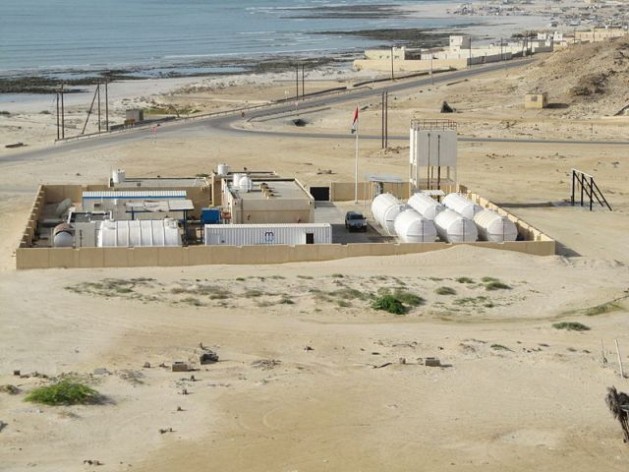Getting Drinking Water from the Sea
by B. Sharper
Pure Water Gazette numerical wizard Bee Sharper rolls out some numbers on production of fresh water by sea water desalination.
Approximate number of desalination plants in the world as of 2013 — 17,200.
Daily production capacity of these plants in gallons — 23 billion.
Percentage of these plants that make potable water from sea water — 59%.
Percentage that make potable water from brackish water — 22%.
Percentage that make potable water from river water and wastewater — 9%.
Total dissolved solids (TDS) count of the saltiest of sea waters (e. g,.the Arabian Gulf) — 50,000 mg/L.
Total dissolved solids (TDS) count of most ocean water — 35,000 mg/L.
Typical chloride content of sea water — 19,000 mg/L.
Typical calcium content of sea water — 400 mg/L.
Typical sodium content of sea water — 10,500 mg/L.
Typical number of viruses present in one drop of sea water — 1,000,000.
Nominal pore size of a reverse osmosis membrane used for desalination — 0.0001 to 0.001 microns.
Nominal pore size of a nanofiltration membrane — 0.001 microns.
Psi equivalent of one bar of pressure — 14.5.
Pressure required to treat sea water by reverse osmosis desalination — 55 to 70 bars (800 psi to 1000 psi).
Pressure required to treat brackish water by reverse osmosis desalination — 15 to 35 bars (220 psi to 500 psi).
Percentage of salts, organics, and microbes that are removed from sea water by high pressure reverse osmosis — 99%+.
Estimated per gallon cost of producing fresh water by desalination with reverse osmosis –1/2 cent.
Desalination plant at Al Khaluf in Oman






